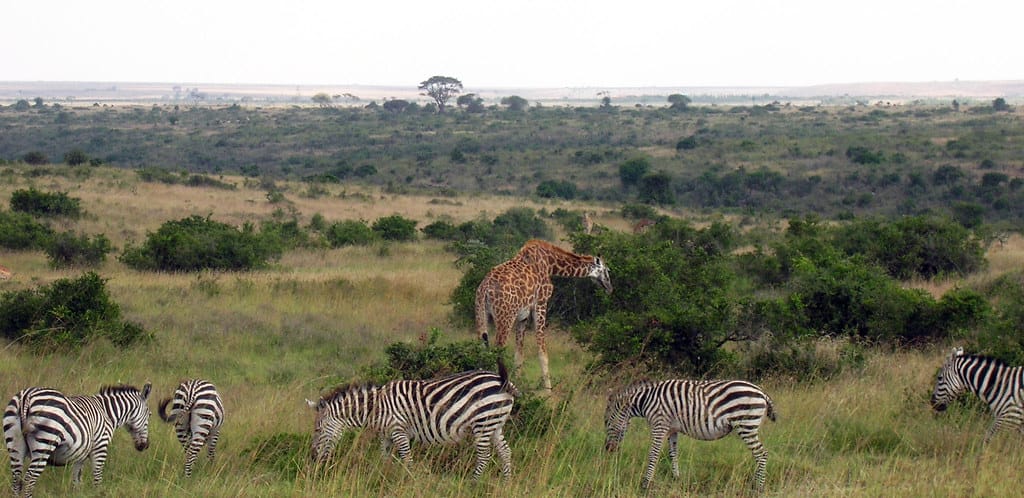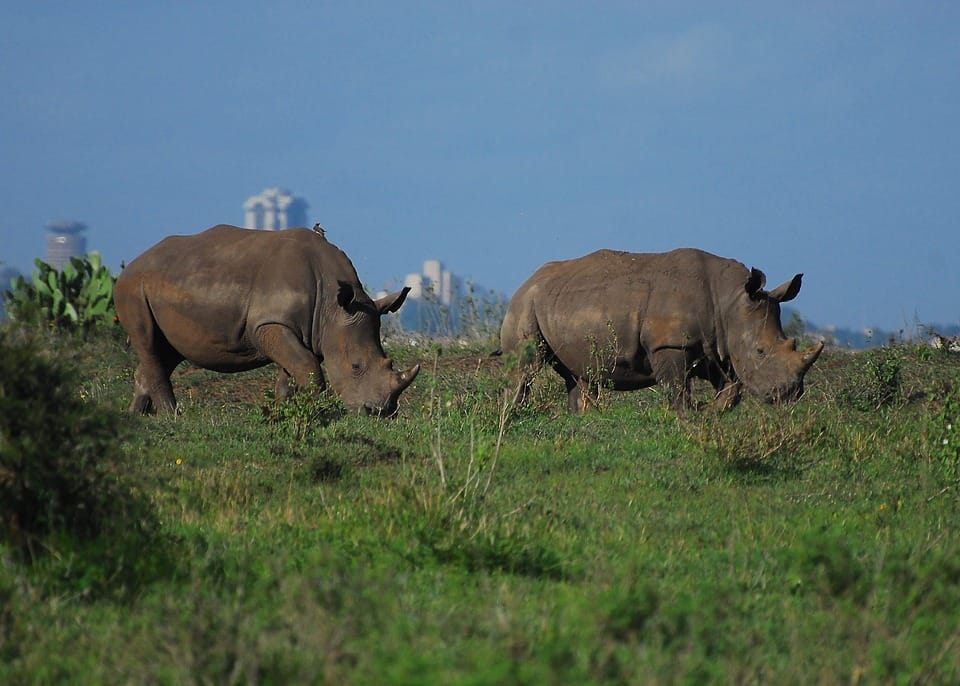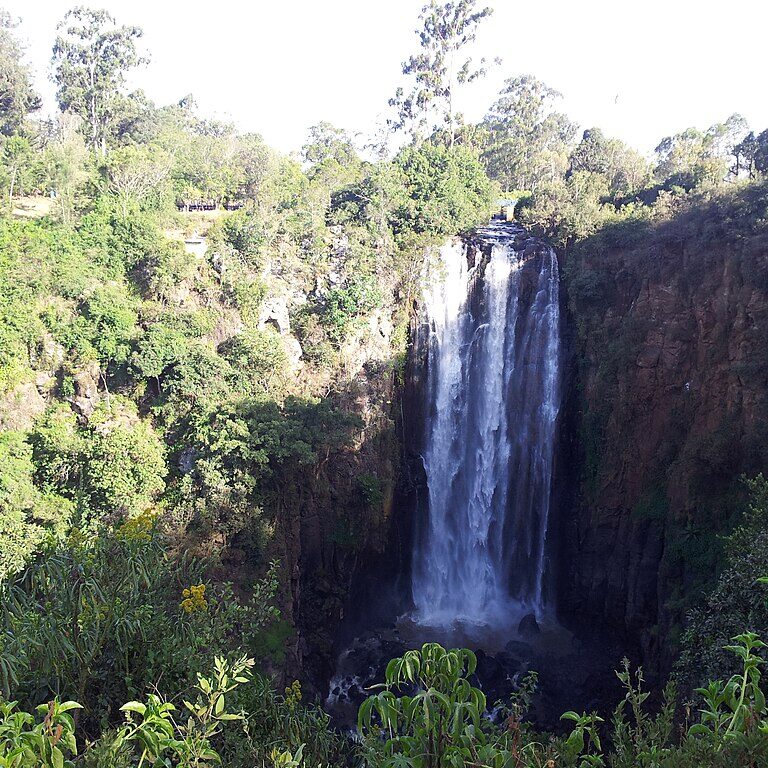Nairobi National Park is a national park in Kenya established in 1946, located about 7 km south of Nairobi. It is fenced on three sides, with an open southern boundary that allows migrating wildlife to move between the park and the adjacent Kitengela plains. The park is home to various wildlife, including rhinos, but faces negative impacts from human and livestock populations, changing land use, and poaching. Despite these challenges, it remains one of Kenya’s most successful rhinoceros sanctuaries. In this blog, we will take a closer look at the history, habitats, and wildlife of Nairobi National Park to understand why it is such a valuable and important protected area.
History of Nairobi National Park
British colonists arrived in the area where the park was in the late 19th century. At this time, the Athi plains east and south of what is today Nairobi had plentiful wildlife. Nomadic Maasai lived and herded their cattle among the wildlife. Kikuyu people farmed the forested highlands above Nairobi. As Nairobi grew—it had 14,000 residents by 1910—conflicts between humans and animals increased.
Residents of the city carried guns at night to protect against lions. Animals were gradually confined to the expansive plains west and south of Nairobi, and the colonial government set this area aside as a game reserve. Settlers from Nairobi, including Isak Dinesen, author of Out of Africa, rode horses among gazelles, impala, and zebras in this reserve.
The conservationist Mervyn Cowie was born in Nairobi. Returning to Kenya after a nine-year absence in 1932, he was alarmed to see that the number of game animals on the Athi plains had dwindled. Expanding farms and livestock had taken the place of the game. He later recalled this place as a paradise that was quickly disappearing.
At this time, the area that would later become Nairobi National Park was part of the Southern Game Reserve. Hunting was not permitted in reserve, but nearly every other activity, including cattle grazing, dumping, and even bombing by the Royal Air Force, was allowed. Cowie started to campaign to establish a national park system in Kenya. The government formed a committee to examine the matter.
Officially opened in 1946, Nairobi National Park was the first national park established in Kenya. Maasai pastoralists were removed from their lands when the park was created. Cowie was named as director of Nairobi National Park and held this position until 1966. In 1989, Kenyan President Daniel Arap Moi burned twelve tons of ivory on a site within the park. This event improved Kenya’s conservation and wildlife protection image.

Habitats and Ecosystems
The park covers an area of 117.21 km2 and is small compared to most of Africa’s national parks. The park’s altitude ranges between 1,533 and 1,760 m. It has a dry climate. The park is the only protected part of the Athi-Kapiti ecosystem, making up less than 10% of this ecosystem. The park has a diverse range of habitats and species.
The park is located about 7 km from the Nairobi’s center. There is electric fencing around the park’s northern, eastern, and western boundaries. The Mbagathi River forms its southern boundary. This boundary is not fenced and is open to the Kitengela Conservation Area (located immediately south of the park) and the Athi-Kapiti plains. There is considerable movement of large ungulate species across this boundary.
The park’s predominant environment is open grass plain with scattered Acacia bushes. The western uplands of the park have highland dry forests with stands of Olea Africana, Croton dichogamous, Brachylaena hutchinsii, and Calodendrum. The lower slopes of these areas are grassland. Themeda, cypress, Digitaria, and Cynodon species are found in these grassland areas. There are also scattered yellow-barked Acacia xanthophloea. There is a riverine forest along the permanent river south of the park.
There are areas of broken bush and deep rocky valleys and gorges within the park. The species in the valleys are predominantly Acacia and Euphorbia candelabrum. Other tree species include Apodytes dimidiata, Canthium schimperiana, Elaeodendron buchananii, Ficus eriocarpa, Aspilia mossambicensis, Rhus natalensis, and Newtonia species. Several plants that grow on the rocky hillsides are unique to the Nairobi area. These species include Euphorbia brevitorta, Drimia calcarata, and Murdannia clarkeana.
Wildlife of Nairobi National Park
The park has a large and diverse wildlife population. Species in the park include lion, leopard, African buffalo, black rhinoceros, giraffe, hippopotamus, spotted hyena, warthog, and many species of antelopes. The park is also home to various bird species, including vultures, eagles, storks, and flamingos.

One of the park’s major attractions is its rhinoceros sanctuary, one of Kenya’s most successful rhinoceros sanctuaries. The park has a population of black and white rhinos, protected from poaching by a team of armed rangers. Visitors to the park can take a guided safari to see these magnificent animals in their natural habitat.
Despite its impressive wildlife population, the Nairobi National Park faces several challenges. Increasing human and livestock populations, changing land use, and poaching threaten the park’s wildlife. However, conservation efforts are being made to protect and preserve the park’s habitats and species for future generations.
Tourism and Education
Nairobi National Park is a popular tourist destination, attracting thousands of visitors annually. The park offers a variety of activities for visitors, including guided safaris, game drives, and bird watching. Visitors can see a wide range of wildlife, including lions, leopards, rhinos, giraffes, and many species of antelopes. The park also has a rhinoceros sanctuary, one of Kenya’s most successful rhinoceros sanctuaries.
Nairobi National Park also offers a range of educational opportunities for visitors. There are guided tours and talks led by experienced park rangers who provide information about the park’s history, habitats, and wildlife. Schools and other groups can also arrange educational visits to the park to learn about conservation, wildlife protection, and the importance of preserving habitats for future generations.
Additionally, the park has a wildlife education center, which provides information about the park’s wildlife and habitats, and offers educational activities and programs for visitors of all ages. By learning about the park and its wildlife, visitors can better appreciate conservation and the importance of protecting habitats and species for future generations.
Conclusion
Nairobi National Park is an important protected area in Kenya with a rich history, diverse habitats, and a special wildlife population. From its creation as the country’s first national park in 1946 to its role as a sanctuary for rhinos, it has played a vital role in conservation and wildlife protection. Despite its challenges, the park remains a valuable resource for wildlife and visitors. If you are planning to visit Kenya, include Nairobi National Park in your itinerary to experience the beauty and diversity of this unique ecosystem.







